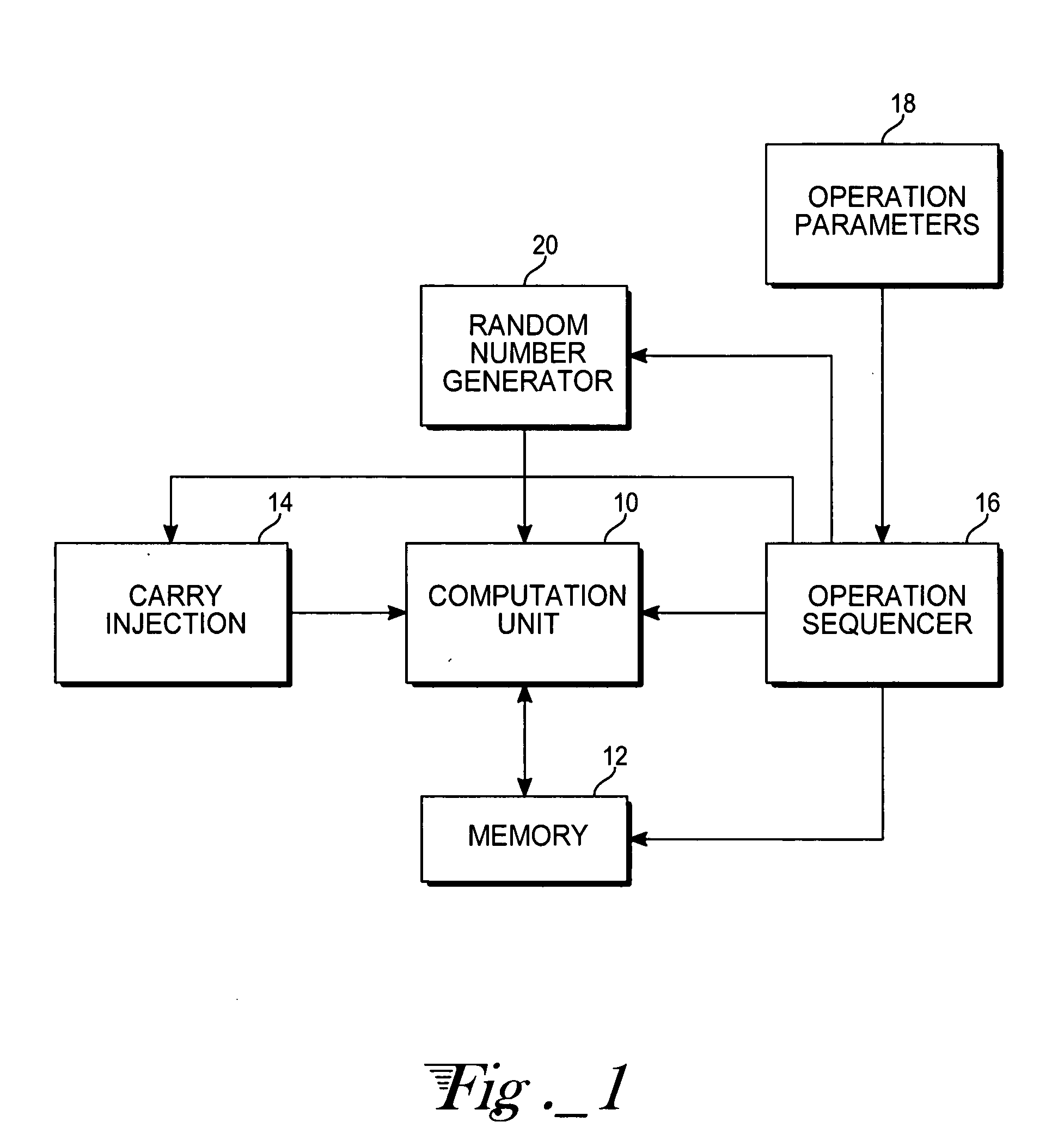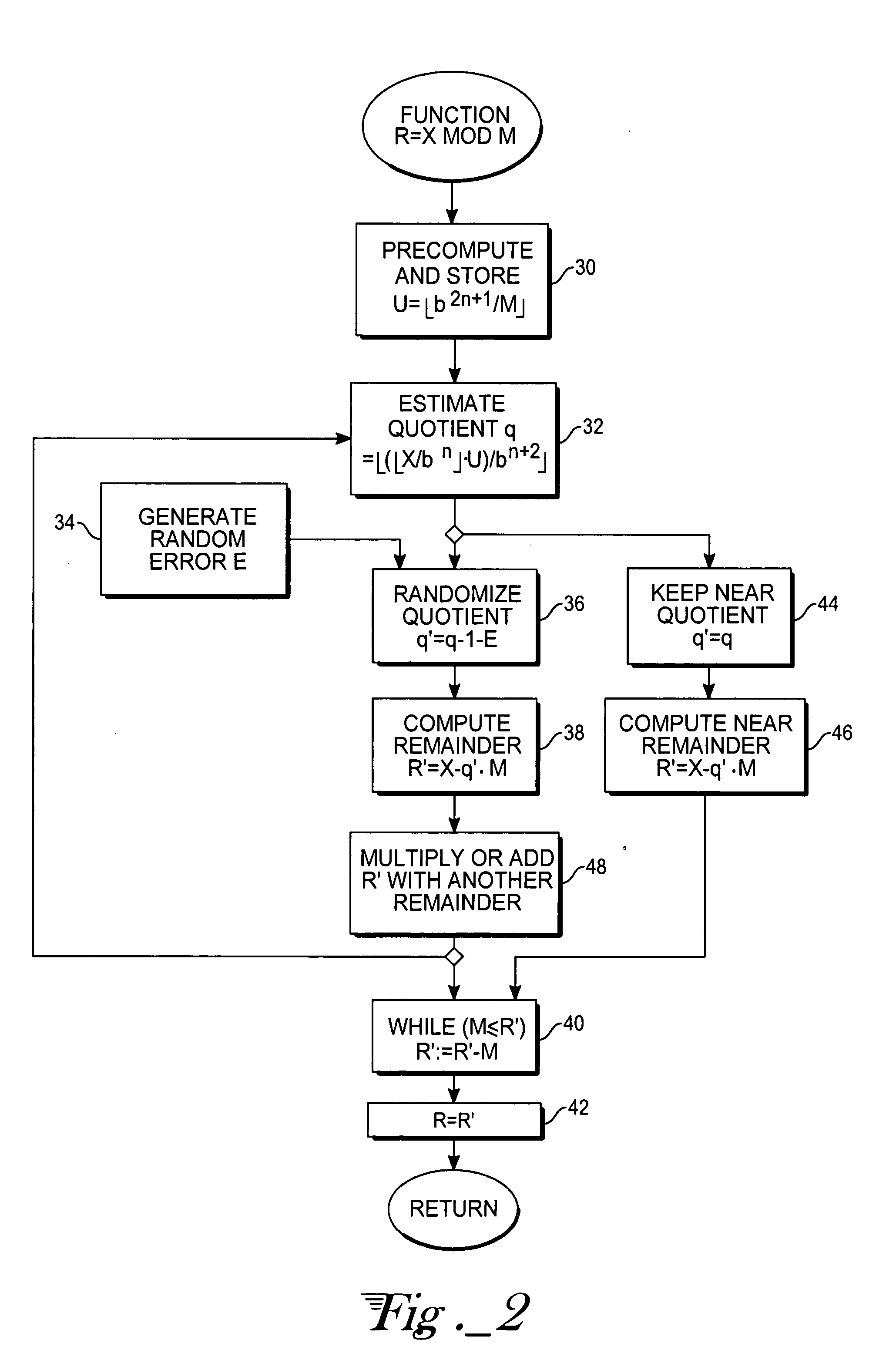Randomized modular reduction method and hardware therefor
- Summary
- Abstract
- Description
- Claims
- Application Information
AI Technical Summary
Benefits of technology
Problems solved by technology
Method used
Image
Examples
Embodiment Construction
[0010] With reference to FIG. 1, computational hardware includes a computation unit 10 that is able to perform word-wide multiply and multiply-accumulate steps on operands retrieved from memory (RAM) 12 and carry terms from registers 14. An operation sequencer 16 comprises logic circuitry for controlling the computation unit 10 in accord with firmware or software instructions for the set of operations to carry out the large-integer multiplication (or exponentiation) and the modular reduction. The operation parameters, stored in registers 18 accessible by the operation sequencer 16, consist in pointers that enable the operation sequencer to locate an operand within the RAM 12, as well as information about the lengths (number of words) of the operands, carry injection control information, and the destination address of the intermediate results. So far, the apparatus is substantially similar to other available hardware adapted for large-integer arithmetic operations. Other than the det...
PUM
 Login to View More
Login to View More Abstract
Description
Claims
Application Information
 Login to View More
Login to View More - R&D
- Intellectual Property
- Life Sciences
- Materials
- Tech Scout
- Unparalleled Data Quality
- Higher Quality Content
- 60% Fewer Hallucinations
Browse by: Latest US Patents, China's latest patents, Technical Efficacy Thesaurus, Application Domain, Technology Topic, Popular Technical Reports.
© 2025 PatSnap. All rights reserved.Legal|Privacy policy|Modern Slavery Act Transparency Statement|Sitemap|About US| Contact US: help@patsnap.com



